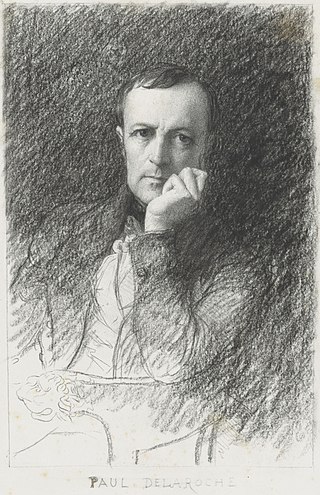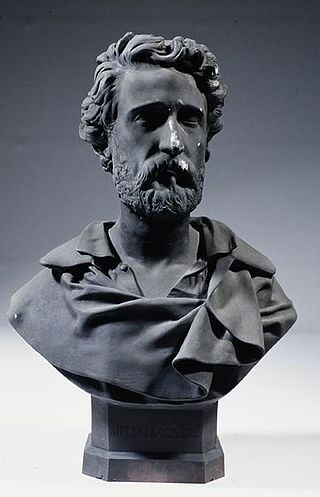

Joan Mas i Ramon (Barcelona, 1934) is a Post-Impressionist style fine artist based at Barcelona and Paris.


Joan Mas i Ramon (Barcelona, 1934) is a Post-Impressionist style fine artist based at Barcelona and Paris.
Joan Mas was born in Barcelona in 1934. He went to Paris in the late 1950s, when he studied painting under the guidance of Roger Chastel at the ENSBA (École Nationale Supérieure des Beaux-Arts) in Paris, from 1961 to 1968. Since then, his work has been exhibited mainly in Europe, specially at Barcelona and Paris. [1] . [2]
His painting was created in the Post-Impressionism with influences of cubism, abstract art and the new figurative. It departs from the conventional dogmas of landscape painting, to give life to a remarkably personal language.

Joan Miró i Ferrà was a Catalan Spanish painter, sculptor and ceramist. A museum dedicated to his work, the Fundació Joan Miró, was established in his native city of Barcelona in 1975, and another, the Fundació Pilar i Joan Miró, was established in his adoptive city of Palma in 1981.

Jean-Paul Riopelle, was a Canadian painter and sculptor from Quebec. He had one of the longest and most important international careers of the sixteen signatories of the Refus Global, the 1948 manifesto that announced the Quebecois artistic community's refusal of clericalism and provincialism. He is best known for his abstract painting style, in particular his "mosaic" works of the 1950s when he famously abandoned the paintbrush, using only a palette knife to apply paint to canvas, giving his works a distinctive sculptural quality. He became the first Canadian painter since James Wilson Morrice to attain widespread international recognition and high praise, both during his career and after his death. He was a leading artist of French Lyrical Abstraction.

Albert Gleizes was a French artist, theoretician, philosopher, a self-proclaimed founder of Cubism and an influence on the School of Paris. Albert Gleizes and Jean Metzinger wrote the first major treatise on Cubism, Du "Cubisme", 1912. Gleizes was a founding member of the Section d'Or group of artists. He was also a member of Der Sturm, and his many theoretical writings were originally most appreciated in Germany, where especially at the Bauhaus his ideas were given thoughtful consideration. Gleizes spent four crucial years in New York, and played an important role in making America aware of modern art. He was a member of the Society of Independent Artists, founder of the Ernest-Renan Association, and both a founder and participant in the Abbaye de Créteil. Gleizes exhibited regularly at Léonce Rosenberg's Galerie de l’Effort Moderne in Paris; he was also a founder, organizer and director of Abstraction-Création. From the mid-1920s to the late 1930s much of his energy went into writing, e.g., La Peinture et ses lois, Vers une conscience plastique: La Forme et l’histoire and Homocentrisme.

Hippolyte-Paul Delaroche was a French painter who achieved his greater successes painting historical scenes. He became famous in Europe for his melodramatic depictions that often portrayed subjects from English and French history. The emotions emphasised in Delaroche's paintings appeal to Romanticism while the detail of his work along with the deglorified portrayal of historic figures follow the trends of Academicism and Neoclassicism. Delaroche aimed to depict his subjects and history with pragmatic realism. He did not consider popular ideals and norms in his creations, but rather painted all his subjects in the same light whether they were historical figures like Marie-Antoinette, figures of Christianity, or people of his time like Napoleon Bonaparte. Delaroche was a leading pupil of Antoine-Jean Gros and later mentored a number of notable artists such as Thomas Couture, Jean-Léon Gérôme, and Jean-François Millet.

Louis Marcoussis was a Polish-French avant-garde painter active primarily in Paris. Markus studied law in Warsaw before attending the Kraków Academy of Fine Arts, and later moved to Paris to study under Jules Lefebvre at the Académie Julian. His work was first featured in a major exhibition at the Salon d'Automne in 1905. In Paris, he became acquainted with prominent artists of the School of Paris and writers in the cafes of Montmartre and Montparnasse.

Jean-Marc Bustamante is a French artist, painter, sculptor and photographer. He is a noted conceptual and installation artist and has incorporated ornamental design and architectural space in his works.

Árpád Szenes was a Hungarian-Jewish abstract painter who worked in France.
The Vietnam University of Fine Arts is an art school in Hanoi, Vietnam originally established under French colonial rule in 1925. The university has trained many of Vietnam’s leading artists and each year it participates in many cultural exchanges with sister institutions overseas.

Jules-Eugène Lenepveu was a French painter.

Georges Dufrénoy was a French post-Impressionist painter associated with Fauvism.

Laureano Barrau Buñol was a Spanish impressionist painter.

Henri Victor Gabriel Le Fauconnier was a French Cubist painter born in Hesdin. Le Fauconnier was seen as one of the leading figures among the Montparnasse Cubists. At the 1911 Salon des Indépendants Le Fauconnier and colleagues Jean Metzinger, Albert Gleizes, Fernand Léger and Robert Delaunay caused a scandal with their Cubist paintings. He was in contacts with many European avant-garde artists such as Wassily Kandinsky, writing a theoretical text for the catalogue of the Neue Künstlervereinigung in Munich, of which he became a member. His paintings were exhibited in Moscow reproduced as examples of the latest art in Der Blaue Reiter Almanach.

Maurice Cullen is considered to be the father of Canadian Impressionism because he was the first artist to skillfully adapted French Impressionism to Canadian conditions. He is best known for his paintings of snow and his depictions of ice harvest scenes, featuring horse-drawn sleighs traveling across the frozen waters of Quebec during winter. The Laurentians were his greatest love and he painted there often. He excelled in painting crisp northern light.

Ethel Carrick, later Ethel Carrick Fox was an English Impressionist and Post-Impressionist painter. Much of her career was spent in France and in Australia, where she was associated with the movement known as the Heidelberg School.

Victor Edmond Nicolas was a French sculptor.

Jules Marie Auguste Leroux was a French painter and illustrator.

Henri Clément Serveau, also known as Clément-Serveau, was a French painter, designer, engraver and illustrator. Clément-Serveau produced works in a realist manner early on, but soon became interested in the new movements. He was influenced by his friend Louis Marcoussis and experimented with Cubism, utilising geometric patterns to give the illusion of form and space. Later in his career, he turned toward abstraction with a post-cubist stance. He designed banknotes for the Banque de France, produced large murals and participated in numerous French and international exhibitions.
Germain David-Nillet who was a French painter. He was born on 4 December 1861 in Paris and died on 12 October 1932 in Paris.

Fang Ganmin was a Chinese French-trained painter, sculptor and educator, who was educated in Paris and spent most of his adult life in China. Regarded as one of the pioneers of Chinese oil painting, Fang was born in the Wenling county, Zhejiang province. He began studying painting in 1924 and went to Paris in 1925, enrolling in the École nationale supérieure des Beaux-Arts, making him one of the first-generation Chinese painters to study abroad in France. Upon returning to China, he taught at the National Arts Academy, Hangzhou, becoming a professor at the Western Painting Department. During the Cultural Revolution, Fang was shamed and tortured by the Red Guards, and his works were destroyed. He died in 1984. His students include Zao Wou-Ki, Chu Teh-Chun and Wu Guanzhong.

Jesús Carles de Vilallonga i Rosell was a Spanish/Canadian figurative artist who worked primarily in the medium of egg tempera. He is best known for his richly textured paintings in an intricate, highly colored style that is not easy even though everything is readily intelligible: male and females characters, beasts, forests, architectural structures and artifacts. Vilallonga's iconography draws from a broad and complex painting tradition ranging from Romanesque art, the Renaissance, and Surrealism, while maintaining his own contemporary style. His work is sometimes related to Symbolism and his production is always enhanced by the contributions of abstraction. He works with the "inner eye" which Freud described as the most profound and the most intelligent, in a sojourn through nature and man's hidden interior.